According to the German Duracell website:
As you press the points, a current will flow through a metal strip getting warm. The display is a thermochromatic one. So the increased temperature will result in a change of color from black to yellow or red in your case.
The strip has to be designed in a way so that the heating of the single elements corresponds to the state of charge. So at the bottom it will have a small cross section and at the top it will be a wider cross section, so that only a full battery will give enough current to heat the upper part enough to cause the color change.
This also explains why it isn't always on. It would drain the battery.
So this seems to be a question and answer with a lot of attention, so I went off to our old battery storage and picked up a Duracell AAA with powercheck feature and disassembled it.
Measuring the resistance of the whole strip wasn't as easy as I thought, but I got the most stable result with a reading somewhere between 2 and 3 Ohms. So it's quite close to a short circuit. Considering the internal resistance is really low at the beginning, you have around 0.75 W wasted to indicate the state of charge. (Around 560 mA with 1.4V and 2.5 Ohm)
The AAA battery would be dead in an hour.
So this is what it looks like:
The naked cell: Nearly all of the body is made up of a cylinder connected to the + side, a paper barrier and a metal plate connected to the - side.

The wrapping: Has another paper separator, providing space between + contact and the cylinder. The red stuff is some sort of insulation coating. And of course you have two metal contacts, one for + and three smaller ones for -.

And below the coating we can make out the metal structure: the metal is still behind a cover of some blueish (teal?) coating. But as predicted, you see that the track is rather narrow at the bottom of the scale and gets wider to the top of the scale.

Thinking a bit more about the paper separator on the wrapping and the long cutout lead me to the following conclusion: The long cutout provides an air cushion below the metal strip acting as a heat insulation. Probably even the paper would have enough heat conductivity to cool the strip significantly, maybe it wouldn't even work.




